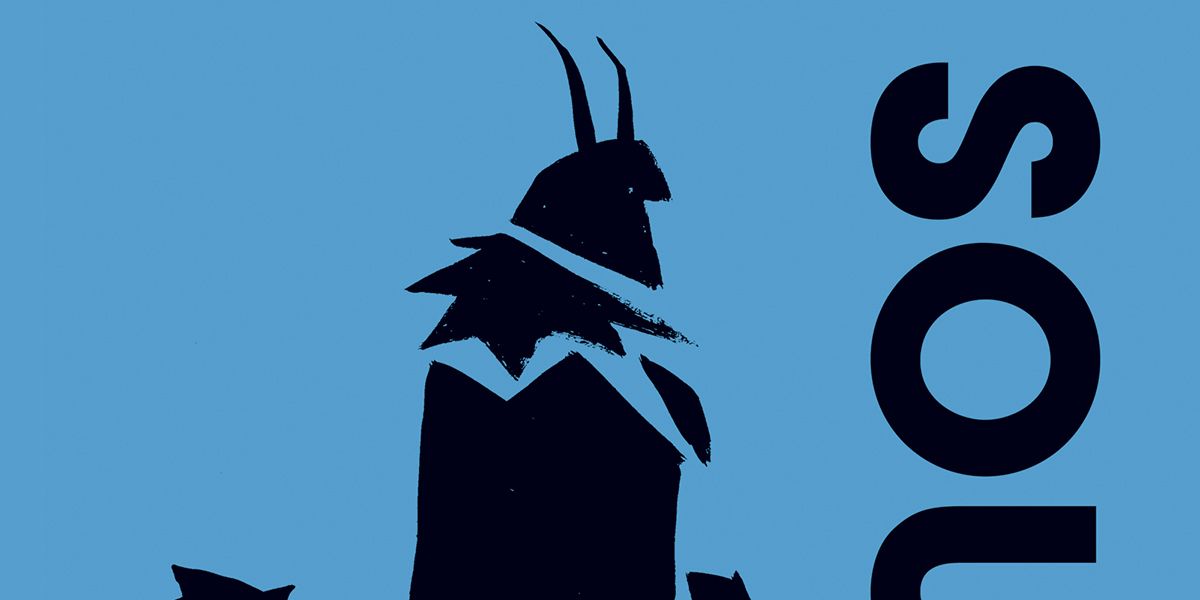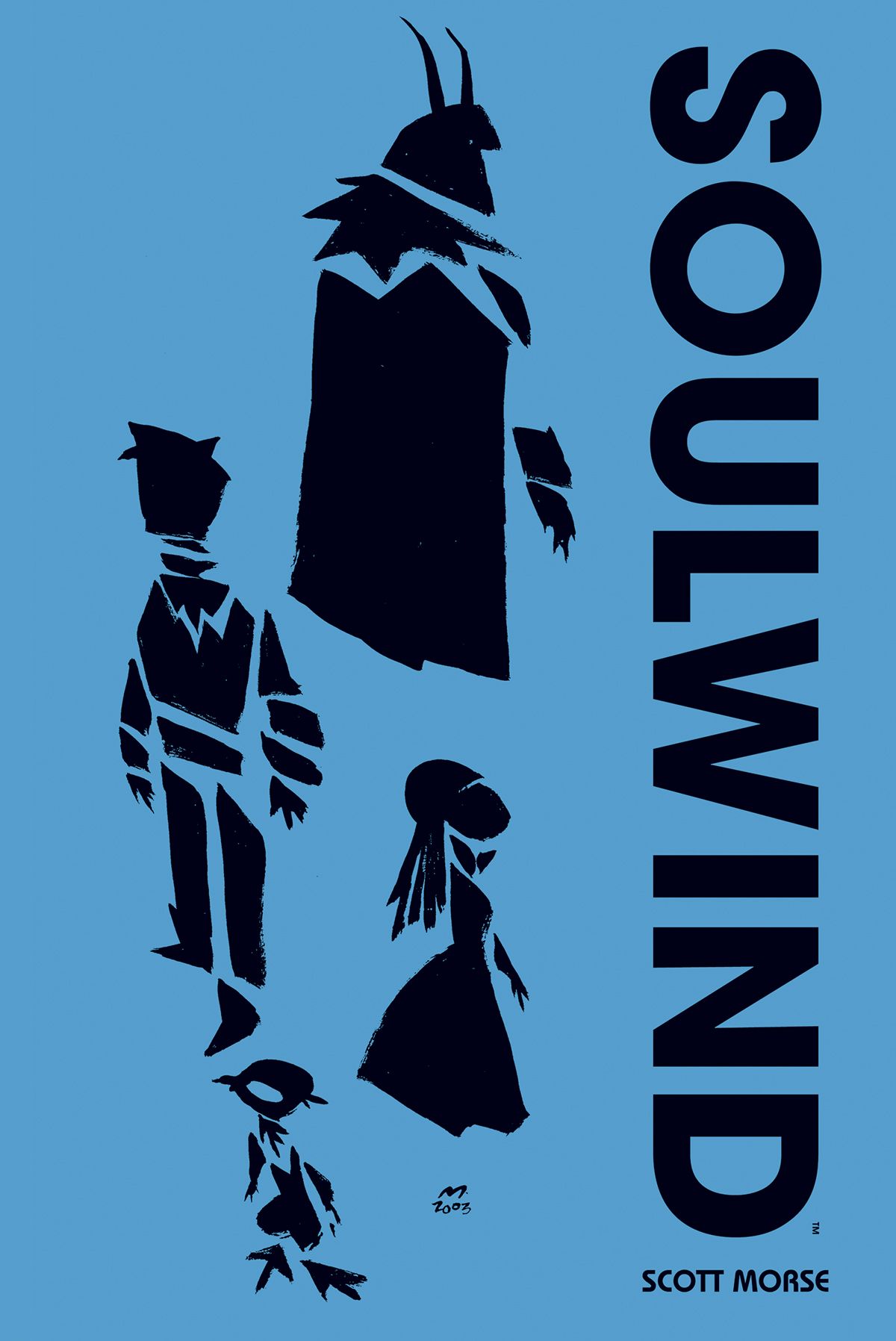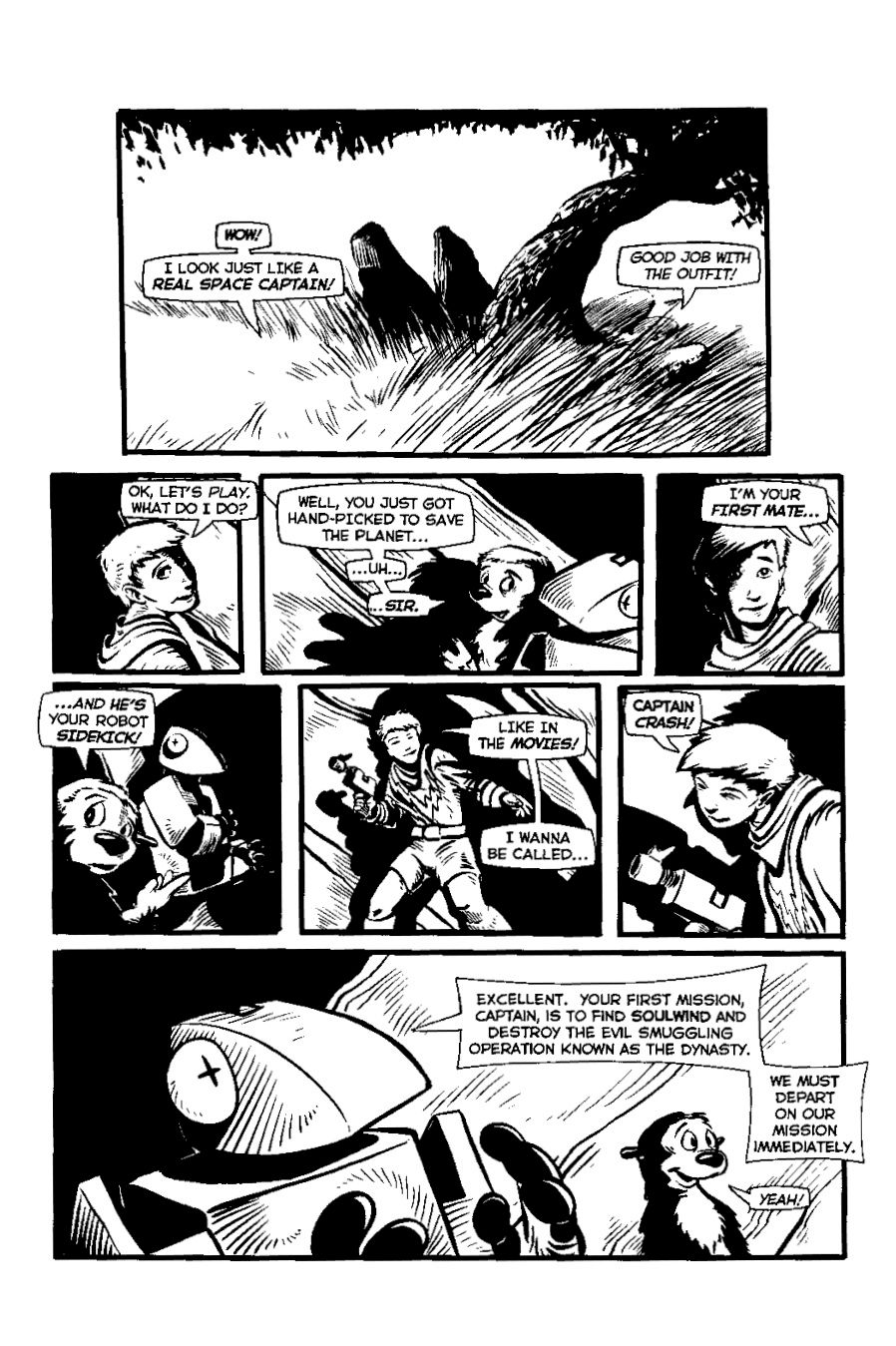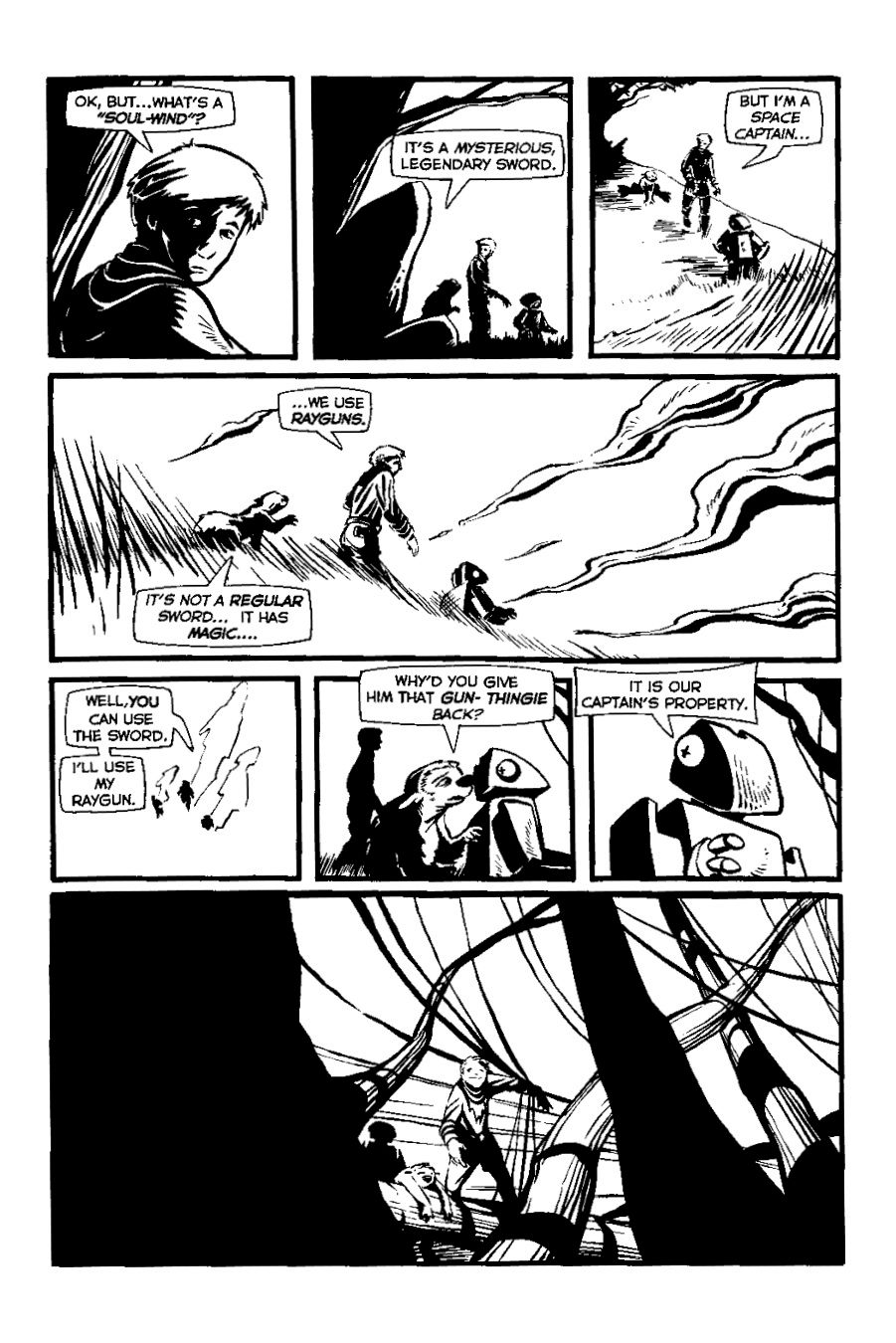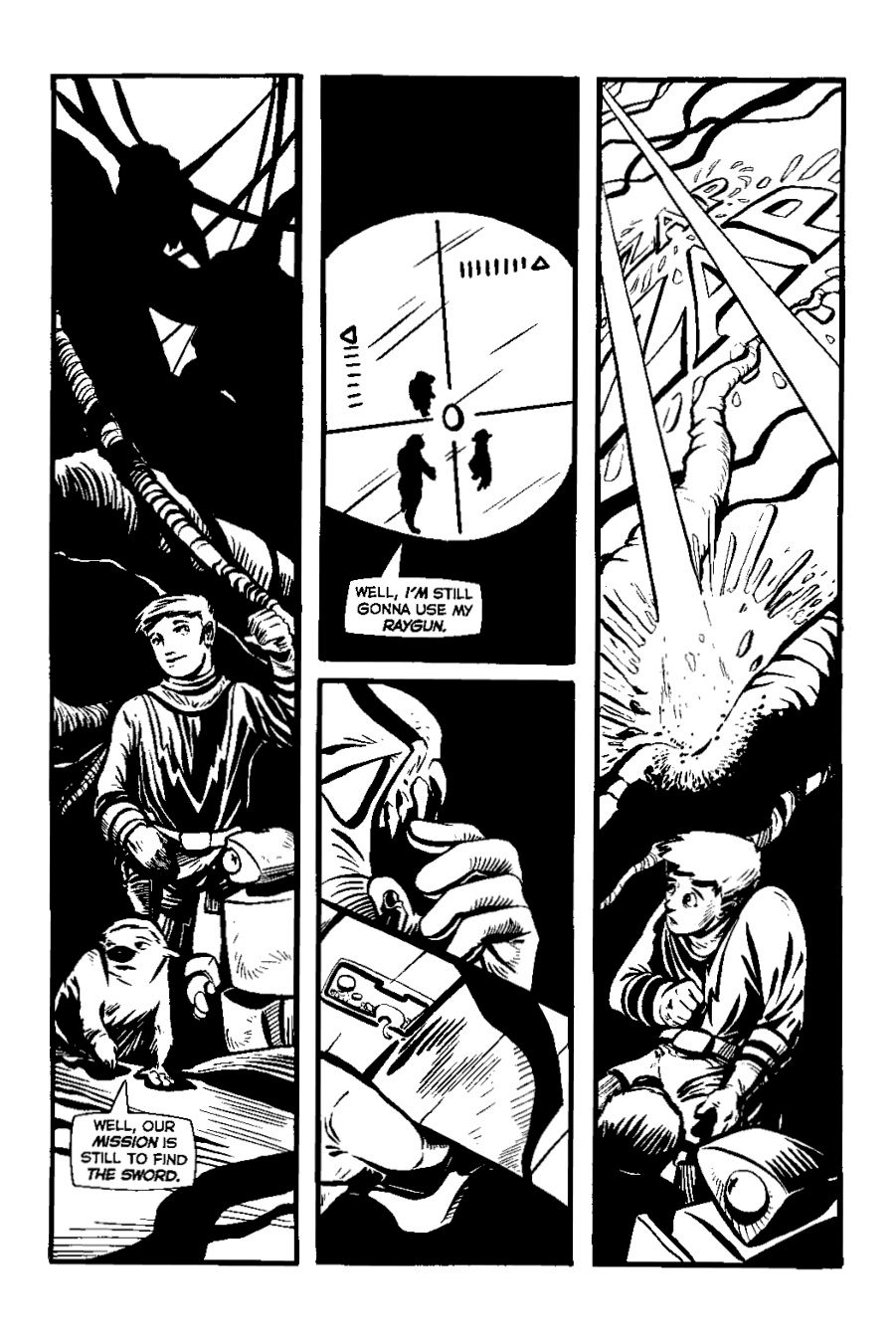In comics, Scott Morse is known for writing and drawing a series of idiosyncratic graphic novels that touched upon many genres, played with form, and experimented in fascinating ways. From The Barefoot Serpent to Magic Pickle, Volcanic Revolver to Tiger!Tiger!Tiger!, Noble Boy to Spaghetti Western, Morse has played with the medium in interesting ways. At the same time, Morse was working in animation, for many years at Pixar.
Morse’s first big comics work was Soulwind. Originally published at Image Comics starting in 1997 and then at Oni Press, the book was an epic in every sense of the word. This month, Oni has released a new hardcover edition of the book. It's the story of a sword named Soulwind that covers thousands of years and multiple planets, and yet it is also the story of a young man and his family. It is a book composed of multiple stories that overlap and build upon one another in striking and moving ways, to a climax that is inevitable and yet not predictable.
RELATED: Morse Unearths Strange Science Fantasy
The book had been out of print for far too long, and Morse answered a few questions from CBR about Soulwind, the new Oni hardcover and what he's working on now.
CBR: Now, I know the marketing tagline, I know how I describe the book, but I’m curious what you think of Soulwind? What is this story to you?
Scott Morse: For me, personally, Soulwind has always been about discovery. The story itself was designed to play with and twist up the Joseph Campbell “Hero’s Quest," to really explore how “the story” can be toyed with in various ways. The content even plays with discovery, the quest to understand what’s right in front of you through interactions with the world around you, with the unexpected, and with emotional turmoil.
Artistically, I always intended Soulwind to be a vehicle for me to explore different styles in relation to the story elements at hand. I knew the book would take on different aesthetic “looks” as the story changed, and I wanted a playground to discover different ways to approach drawing and sequential pacing.
Now when did this begin? I started reading it when Oni first reprinted it, but you were publishing before then at Image, do I have that right?
The original single issues did indeed premiere with Image. There were 8 single issues that were designed as the first two story volumes, and Oni reprinted those as volumes 1 and 2, and I finished out the tale at Oni with the three final volumes. The first four issues with Image were nominated for two Eisner Awards in 1997, for Best Limited Series and Best Writer/Artist (I think). That blew my mind to have it accepted by my peers so readily and quickly.
Strangely enough, though, Soulwind really first appeared in a fanzine out of Ohio called Graphic Enterprises Presents. It was very different then, but still revolved around the sword. That was printed when I was in high school, probably around 1991 or so. And, if you can find those stapled fanzines anywhere, you’ll also catch the first iteration of Paul Pope’s THB, then going by the name the Grape Man, if I recall correctly.
You were trained as an animator, or at least went to art school for animation and you’ve been working in animation. When were you in your career when you started to work on this?
I started work on pages that appear in the first volume of Soulwind in 1993, I think. I was still in college at CalArts, in film school, studying character animation. I worked on it on the “side” as I studied and began working in the film industry, always with the goal of self-publishing, inspired by Cerebus and Bone and Stray Bullets. I set up at Wondercon one year, not selling anything, just showing pages and doing free drawings for people, and was humbled when Will Eisner dropped by and looked it over, offering advice and praise, and really just staggering me with validation. At that same show, I spoke with Bob Schreck, Rob Liefield, and Jim Valentino, all separately, and Jim called me afterwards, out of the blue, and asked if I’d consider printing with with Shadowline at Image. I owe Jim so much for encouraging me with that first real foray into the industry at large.
Meanwhile, I was handling art direction at Universal, and eventually moved on to art direction at Hanna-Barbara and Cartoon Network, just as I finished the whole story with Oni.
How did the project change as you were working on it? Did you always know the story and how it would play it out? Did anything change in the process?
I honestly knew the whole story would resolve with the Chinese brush-painted characters. And while I had a rough idea of the larger movements, I didn’t have the fine details painted out. Book III is really the one that I had to sit with and really plan out the details of the back-half of the story. I tend to draw on old memories and references from my life when I’m writing and naming characters and such (Nick is named for a family friend, the car in Book II is my Dad’s 1934 Ford Sedan), so when I remembered a high school band named the "Infamous Transit Vagrants" that clicked for me and helped me brainstorm to move things along. I was heavily researching Arthurian legend for Book II, so I knew about how I wanted to play with the Arthur myth in Book III. But having Weaver sort of “haunt” Nick on his journey through the wormhole helped tie things together, and that wasn’t planned on until I started laying out pages. So much of the research I did on the Arthurian stuff, and research on really old creation myths (which lead to a discovery of references to the August Ones), had already sort of been marked in my brain from earlier on to get through the endgame of Book V.
Page 2: [valnet-url-page page=2 paginated=0 text='Revisiting Soulwind, Next Comic Book Projects']
Soulwind stands out for me even in retrospect because of the number of plot threads and characters and the number of styles you used. Was there a model for what you were trying to do? Or something you were reacting against?
I must have been reading Sandman and Cages around then, and seeing so many art styles and meeting so many artists that pinged my interest around that era really pushed me to want to push myself. Still, I know that Stephen King’s The Dark Tower series played a major role in me developing Soulwind since high school. I knew I wanted to play with something that had a really large scope, something that would help me wrestle, dig holes, have to find ways to climb out of them, and then still have them come together to make sense. I was really aware of trying to tie things together as I went. I always try my best to avoid plot threads that don’t go anywhere or tie up.
It's about 20 years since Soulwind was first published. Did you go back and reread it and look over the pages for this new edition? What do you make of it today?
I’m waiting to put it in the hands of my kids to read when they’re ready for the heavier concepts in a year or so. They’re amazing judges. I want to see if they think it works. I think if I sit with it and reread it, I’ll find so many things to cringe about personally. It’s a time capsule for me, something I hope to look back on at some point and hopefully reflect on the roads traveled.
What’s been so heartening is meeting peers, other storytellers, that have read it and tell me they buy copies when they find it to give to friends. That’s the biggest compliment, and keeps me believing it still resonates. I’m really hoping to see a new generation find it and hopefully have fun with the unexpected journey they’ll go on.
RELATED: Oni’s The Ballad of Sang Channels Cult Cinema for Bloody Revenge Tale
You published a number of books through Oni and other publishers, and many are out of print. Is there a chance we’ll see some others reprinted soon?
You never know. The hard part is that technology has changed and a lot of the original artwork was sold off at different points. Getting high-quality reproductions that are print-ready is the challenge. Soulwind was from a time of film and photostats, all lost to time. I’m really indebted to the amazing production folks at Oni for putting the love, time, and care into archiving this book. They’ve done such an amazing job, especially considering there were no existing scans.
Are you thinking about any comics projects right now?
I’m in the final few pages of a new graphic novel for Scholastic called Dugout. It’ll hit in the spring of 2019. It details the misadventures of warring twin sisters on opposing Little League teams. It’s rumored that they hail from a family lineage of witchcraft, and when one curses the other’s team, hijinks ensue. It’s a big story focusing on communication, on the traps we fall into when ego takes charge, and how hard it can be to reconcile. I’m really excited about this book… if you check out Instagram or Twitter, you’ll catch glimpses. But it’s almost done. I’ve been coaching little league for a few years now, preparing to coach my 10th team, so there’s been a lot of characters to draw from.
I’m also toying with a few other ideas -- sea witches, 1930’s animation industry shenanigans, space opera melodrama, noir. We’ll see what boils to the surface sooner than later. I’ve always got a number of ideas going in “development” and I toy with them in by head until inspiration really takes hold and I start drawing. The story has to come first, and it has to be interesting to draw. Then my interest will stay piqued for the long haul!
The new, 520-page hardcover collection of Soulwind is available now from Oni Press.

